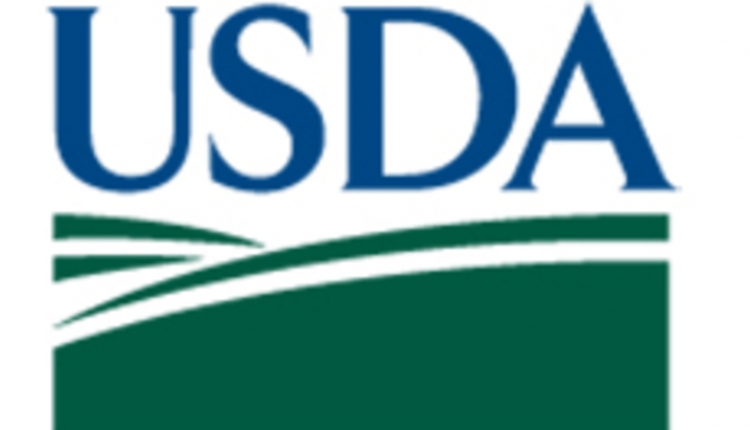The world has been the United States' dairy products export oyster in 2013. Droughts and other challenges experienced by others brought great opportunity to our doorstep, and U.S. companies responded with unprecedented sales volumes.
Whether that will continue in 2014 was a key topic of discussion at an outlook seminar held in Twin Falls, Idaho, last month by authors of the Daily Dairy Report.
They explained that key dairy exporting nations have suffered serious milk production setbacks in recent years, most notably New Zealand and Europe, but they are already beginning to bounce back. One to 3 billion pounds more of various milk powder products are forecast to be available on the world market next year than in 2013, which means more competition and tougher sales for U.S. exporters.
 Daily Dairy Report Editor Mary Ledman said that while greater product availability can be expected to push both world and U.S. milk prices lower, she doesn't expect anything drastic. One reason is higher costs on farms.
Daily Dairy Report Editor Mary Ledman said that while greater product availability can be expected to push both world and U.S. milk prices lower, she doesn't expect anything drastic. One reason is higher costs on farms.
"The tide has been changing," she explained. "Production costs have moved up in both Oceania and Europe, yet global demand for powder has stayed high. The world market is still very tight."
Beyond 2014, however, she expects greater milk volume and export competition to start coming from the European Union as its production quota system ends. Her "big three" predictions were Ireland, Germany and The Netherlands.
"The greatest unknown is how much dairy producers around the world will boost production. Cheaper and more abundant feed means everyone in the world has the signal to produce more milk," said Ledman.
Still, she thinks feed costs in 2014 will drop more than milk prices will, so the gradual gains in U.S. producer profit margins that have been seen most of this year should continue.
 Cheaper feed is a situation that analyst Sarina Sharp thinks will last beyond next year, especially on the corn front and even though prices for it have come way down. One reason is the U.S. is by far the world's biggest corn producer. Another is the reality that the U.S. is now just one of several major exporters.
Cheaper feed is a situation that analyst Sarina Sharp thinks will last beyond next year, especially on the corn front and even though prices for it have come way down. One reason is the U.S. is by far the world's biggest corn producer. Another is the reality that the U.S. is now just one of several major exporters.
"Four-dollar prices are not going to keep a lot of people [around the world] from growing corn and we're going to have to compete for export sales," she explained.
Even if planted corn acreage in the U.S. falls a bit, Sharp expects plenty of supplies for livestock because of less use by ethanol plants. "I believe the multi-year bull market in corn prices due to demand for ethanol are over," she said.
She explained that not only has the government-mandated "blend ratio" of 10 percent ethanol in gasoline nearly been met it was 9.4 percent in 2010, 9.6 percent in 2011 and 9.7 percent in 2012 but the total amount needed has hit something of a wall, since total gas usage per year since 2007 has dropped nearly 6 percent.
She added that while all producers' feed costs have dropped this year and she thinks they will continue to fall, she doesn't think they will be equal everywhere. Longer term, she expects feed competition in the U.S. to increase as water scarcity increases and areas that were once able to grow forages lose that capacity.
"I think it's possible that water rights for some dairy producers could be gone within the current generation," she warned.
Sharp also thinks producer profit ability will continue in 2014 even if milk prices drop. Lower feed costs are the big reason, but high beef prices are another.
"It's no secret that beef cull checks have been very high in recent years, and I think they're going to stay there," she said. "Because of tightening cattle supplies and cheaper corn we are seeing feeder prices move higher. This is going to support the price of bull calves and cull cows from the dairy industry. The most valuable calf born on your dairy today is a bull calf, and crossbred beef calves are by far the most valuable ones you can produce.
"Anytime there is a dairy liquidation there will be a lot of beef buyers at the sale. And whether it's a liquidation or not they will put a floor under dairy cattle prices. The beef industry is pulling on dairy animals at every level and every age, and that's why I'm optimistic that dairy profit margins can stay high even with cheap feed prices."
This article appears on page 123 of the November 2013 issue of Hoard's WEST.
Whether that will continue in 2014 was a key topic of discussion at an outlook seminar held in Twin Falls, Idaho, last month by authors of the Daily Dairy Report.
They explained that key dairy exporting nations have suffered serious milk production setbacks in recent years, most notably New Zealand and Europe, but they are already beginning to bounce back. One to 3 billion pounds more of various milk powder products are forecast to be available on the world market next year than in 2013, which means more competition and tougher sales for U.S. exporters.
 Daily Dairy Report Editor Mary Ledman said that while greater product availability can be expected to push both world and U.S. milk prices lower, she doesn't expect anything drastic. One reason is higher costs on farms.
Daily Dairy Report Editor Mary Ledman said that while greater product availability can be expected to push both world and U.S. milk prices lower, she doesn't expect anything drastic. One reason is higher costs on farms."The tide has been changing," she explained. "Production costs have moved up in both Oceania and Europe, yet global demand for powder has stayed high. The world market is still very tight."
Beyond 2014, however, she expects greater milk volume and export competition to start coming from the European Union as its production quota system ends. Her "big three" predictions were Ireland, Germany and The Netherlands.
"The greatest unknown is how much dairy producers around the world will boost production. Cheaper and more abundant feed means everyone in the world has the signal to produce more milk," said Ledman.
Still, she thinks feed costs in 2014 will drop more than milk prices will, so the gradual gains in U.S. producer profit margins that have been seen most of this year should continue.
 Cheaper feed is a situation that analyst Sarina Sharp thinks will last beyond next year, especially on the corn front and even though prices for it have come way down. One reason is the U.S. is by far the world's biggest corn producer. Another is the reality that the U.S. is now just one of several major exporters.
Cheaper feed is a situation that analyst Sarina Sharp thinks will last beyond next year, especially on the corn front and even though prices for it have come way down. One reason is the U.S. is by far the world's biggest corn producer. Another is the reality that the U.S. is now just one of several major exporters."Four-dollar prices are not going to keep a lot of people [around the world] from growing corn and we're going to have to compete for export sales," she explained.
Even if planted corn acreage in the U.S. falls a bit, Sharp expects plenty of supplies for livestock because of less use by ethanol plants. "I believe the multi-year bull market in corn prices due to demand for ethanol are over," she said.
She explained that not only has the government-mandated "blend ratio" of 10 percent ethanol in gasoline nearly been met it was 9.4 percent in 2010, 9.6 percent in 2011 and 9.7 percent in 2012 but the total amount needed has hit something of a wall, since total gas usage per year since 2007 has dropped nearly 6 percent.
She added that while all producers' feed costs have dropped this year and she thinks they will continue to fall, she doesn't think they will be equal everywhere. Longer term, she expects feed competition in the U.S. to increase as water scarcity increases and areas that were once able to grow forages lose that capacity.
"I think it's possible that water rights for some dairy producers could be gone within the current generation," she warned.
Sharp also thinks producer profit ability will continue in 2014 even if milk prices drop. Lower feed costs are the big reason, but high beef prices are another.
"It's no secret that beef cull checks have been very high in recent years, and I think they're going to stay there," she said. "Because of tightening cattle supplies and cheaper corn we are seeing feeder prices move higher. This is going to support the price of bull calves and cull cows from the dairy industry. The most valuable calf born on your dairy today is a bull calf, and crossbred beef calves are by far the most valuable ones you can produce.
"Anytime there is a dairy liquidation there will be a lot of beef buyers at the sale. And whether it's a liquidation or not they will put a floor under dairy cattle prices. The beef industry is pulling on dairy animals at every level and every age, and that's why I'm optimistic that dairy profit margins can stay high even with cheap feed prices."











